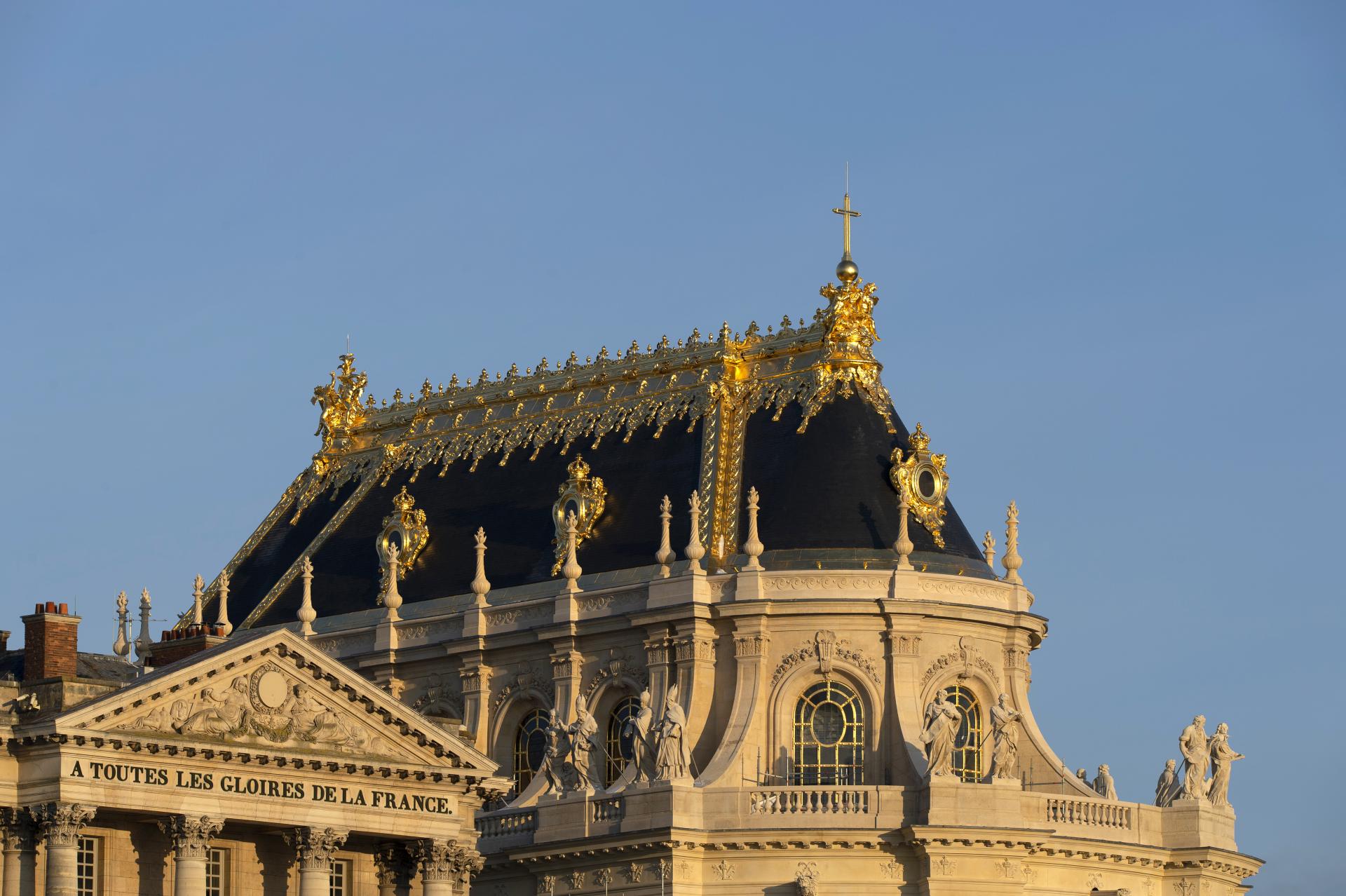Built according to plans by Jules Hardouin-Mansart, the Royal Chapel at the Palace of Versailles is a masterpiece of religious architecture in France and a highlight for visitors to the monument.
The Royal Chapel Annexes
The Royal Chapel and its Annexes
Planned as early as the 1680s, the construction of the Royal Chapel was postponed for financial reasons and resumed in 1699 to be completed ca. 1710.
In 1682, Louis XIV expressed a desire to appoint the Lazarists (or Congregation of the Mission), who were originally 14 and later 21, to celebrate mass. This organization called for extensive spaces outside the sanctuary itself, and a site was reserved at the end of the North Wing.
These rooms were built ca. 1708-1710 under the direction of Mansart and subsequently Robert de Cotte.
These Annexes, located alongside the residences of courtiers, officers and other guards occupying the North Wing, brought together various functions associated with worship and the operations of the Chapel (Lazarist Residence, Classroom for altar boys, Musicians’ Room, Verger and Preacher Residences, Grand Sacristy, Pièce du lavabo, etc.).
Exterior of the Royal Chapel © EPV/Didier Saulnier
The Royal Chapel Annexes: Spaces of Singular Authenticity
The adjacent rooms to the Chapel have changed very little since the Ancien Régime. Like the rest of the palace, the residences were regularly adapted and condensed as of the mid-18th century, and a staircase landing was transformed into an Oratory for Madame de Pompadour. In the 19th century, the need to preserve the Sacristy ensured the preservation of the entire North Wing upon the construction of the Africa Rooms. Only the Lazarists’ Staircase was demolished, replaced by a furnace intended to heat the Smalah Room.
The adjacent rooms to the Chapel thus offer rare and precious insight into the daily lives of courtiers and Chapel priests during the Ancien Régime.
The Royal Chapel restoration project includes work on these rooms, made necessary by sometimes severe deterioration.
Urgent Restoration
Two of these rooms have undergone alterations over the years as a result of the Chapel being used as a performance venue, calling for specific logistical adaptations. Today, they must be restored and their technical facilities renovated.
The GrAnd Sacristy and the Pièce du lavabo
The Grand Sacristy is the largest and most beautiful room of the Chapel Annexes. The vestment cabinets have sustained significant warping.
Major reconstruction is necessary to ensure the lasting structural integrity of the Pièce du lavabo: the floor has sunk by more than ten centimeters (four inches), causing significant warping in the paneling. The precious Languedoc marble sink and its lead piping will be restored using traditional methods.
Grand Sacristy © EPV/Didier Saulnier
The Grand Sacristy and the Pièce du lavabo, are looking for their patron.
The restoration and reorganization of these spaces will allow for the creation of a new tour in a part of the Palace that has not yet been accessible to the public up to now. Meanwhile, the Grand Sacristy will continue to be used for religious purposes.
Help the Palace of Versailles preserve its exceptional heritage.
For more information, please contact the Patronage Department:
+33 (0)1 30 83 77 40


